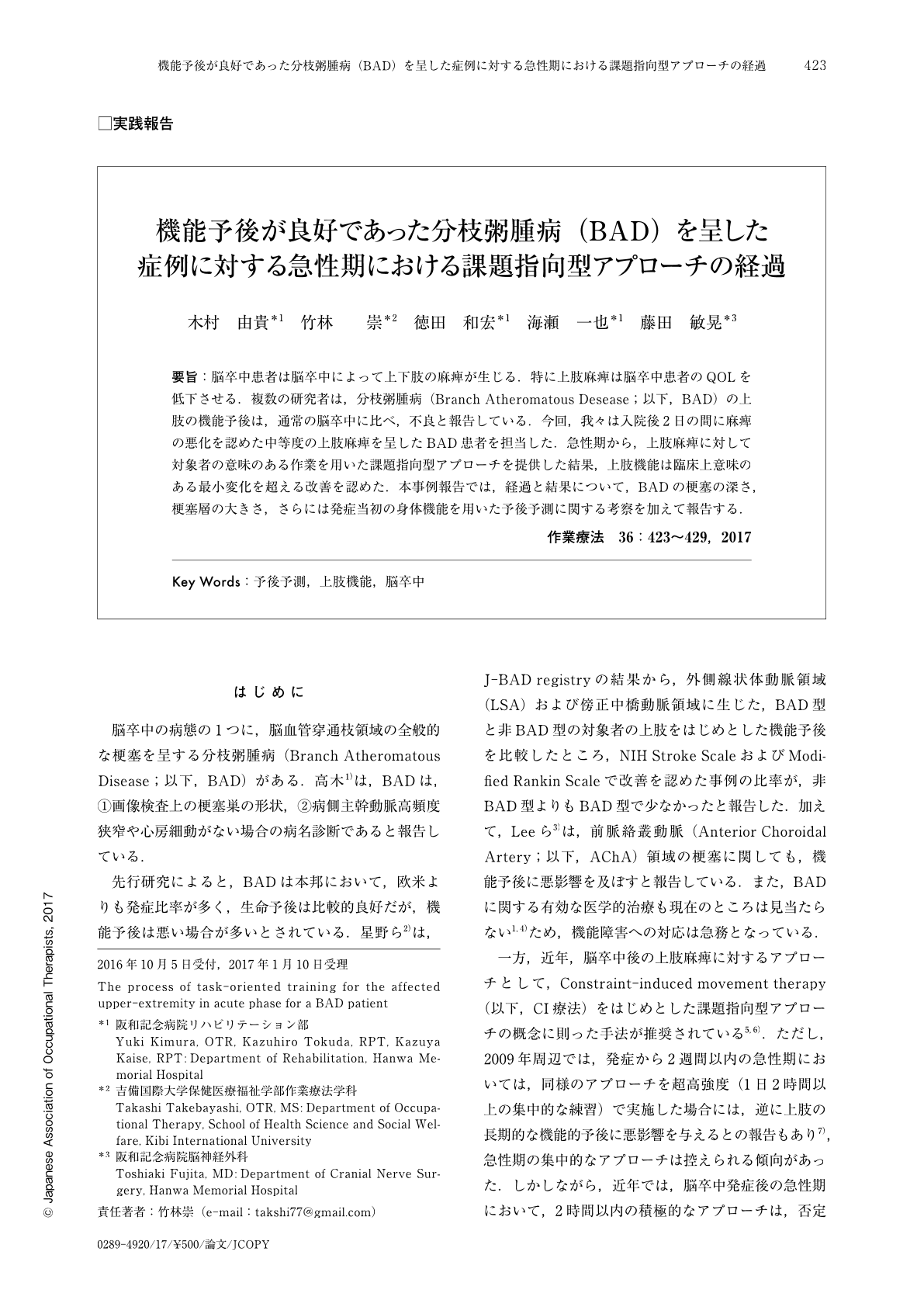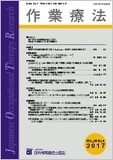Japanese
English
- 販売していません
- Abstract 文献概要
- 1ページ目 Look Inside
- 参考文献 Reference
要旨:脳卒中患者は脳卒中によって上下肢の麻痺が生じる.特に上肢麻痺は脳卒中患者のQOLを低下させる.複数の研究者は,分枝粥腫病(Branch Atheromatous Desease;以下,BAD)の上肢の機能予後は,通常の脳卒中に比べ,不良と報告している.今回,我々は入院後2日の間に麻痺の悪化を認めた中等度の上肢麻痺を呈したBAD患者を担当した.急性期から,上肢麻痺に対して対象者の意味のある作業を用いた課題指向型アプローチを提供した結果,上肢機能は臨床上意味のある最小変化を超える改善を認めた.本事例報告では,経過と結果について,BADの梗塞の深さ,梗塞層の大きさ,さらには発症当初の身体機能を用いた予後予測に関する考察を加えて報告する.
Stroke-induced arm hemiparesis has been widely reported, and results in a significant decline in quality of life for stroke survivors. Branch Atheromatous Disease (BAD) is a type of stroke which has resulted in a worse prognosis of upper extremity function than conventional stroke. The paper presents an account of a BAD patient whose upper extremity paresis deteriorated during the initial 2 days of hospitalization. From the acute phase, we treated for upper extremity paresis of the patients using task-oriented training to regain the meaningful occupation. Consequently, the affected upper extremity function improved more than minimum expectations, indicating an important clinical difference among acute stroke patients. This case study explains the process and results of occupational therapy for this BAD patient, and includes the functional prognosis for upper extremity function at the onset of BAD.

Copyright © 2017, Japanese Association of Occupational Therapists. All rights reserved.


